Category: Critical Care
Posted: 9/22/2015 by Haney Mallemat, MD
Click here to contact Haney Mallemat, MD
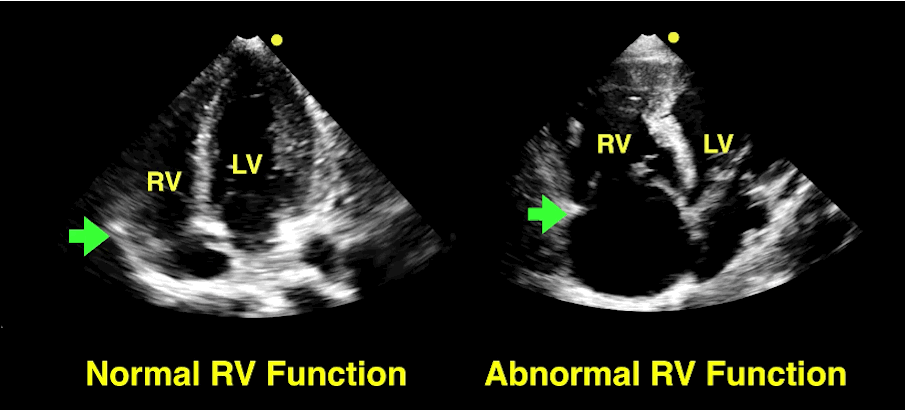
Follow me on Twitter (@criticalcarenow)
Category: Visual Diagnosis
Posted: 9/21/2015 by Haney Mallemat, MD
Click here to contact Haney Mallemat, MD
30 year-old male with abdominal pain and diffuse tenderness on exam. Ultrasound is shown, what's the diagnosis?
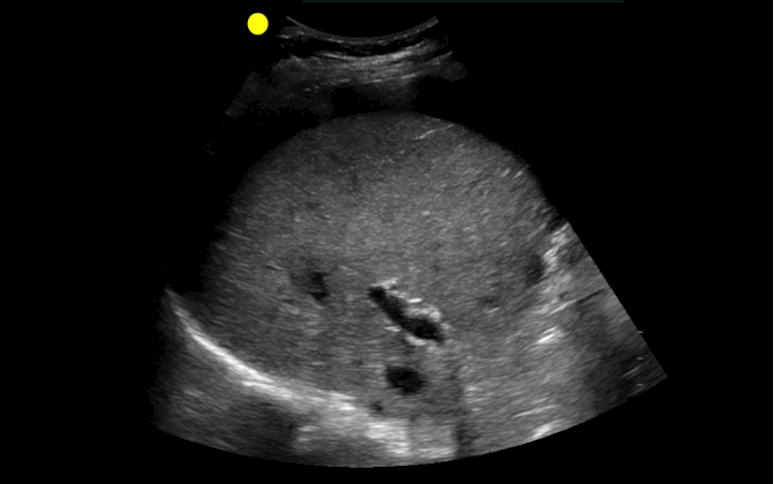
Free intra-abdominal fluid.
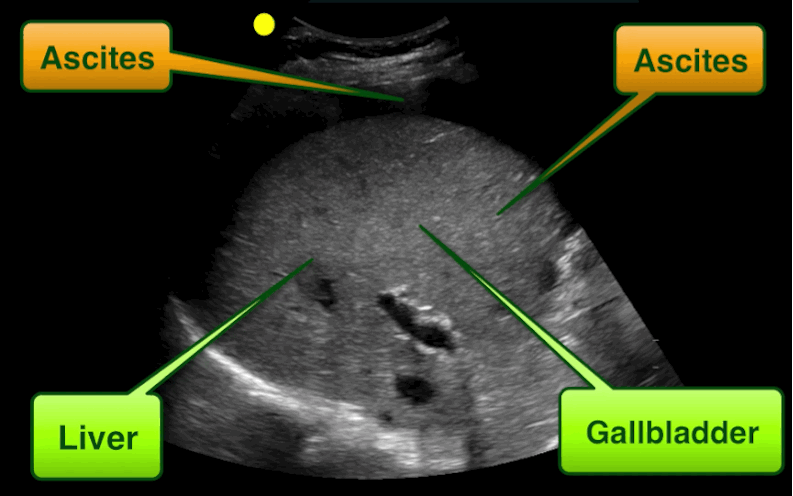
Follow me on Twitter (@criticalcarenow)
Category: Visual Diagnosis
Posted: 9/14/2015 by Haney Mallemat, MD
Click here to contact Haney Mallemat, MD
35 year-old female presents to the Emergency Room with cough and chest tightness. She was discharged from the hospital yesterday for an asthma exacerbation that was secondary to pneumonia. What's the diagnosis?
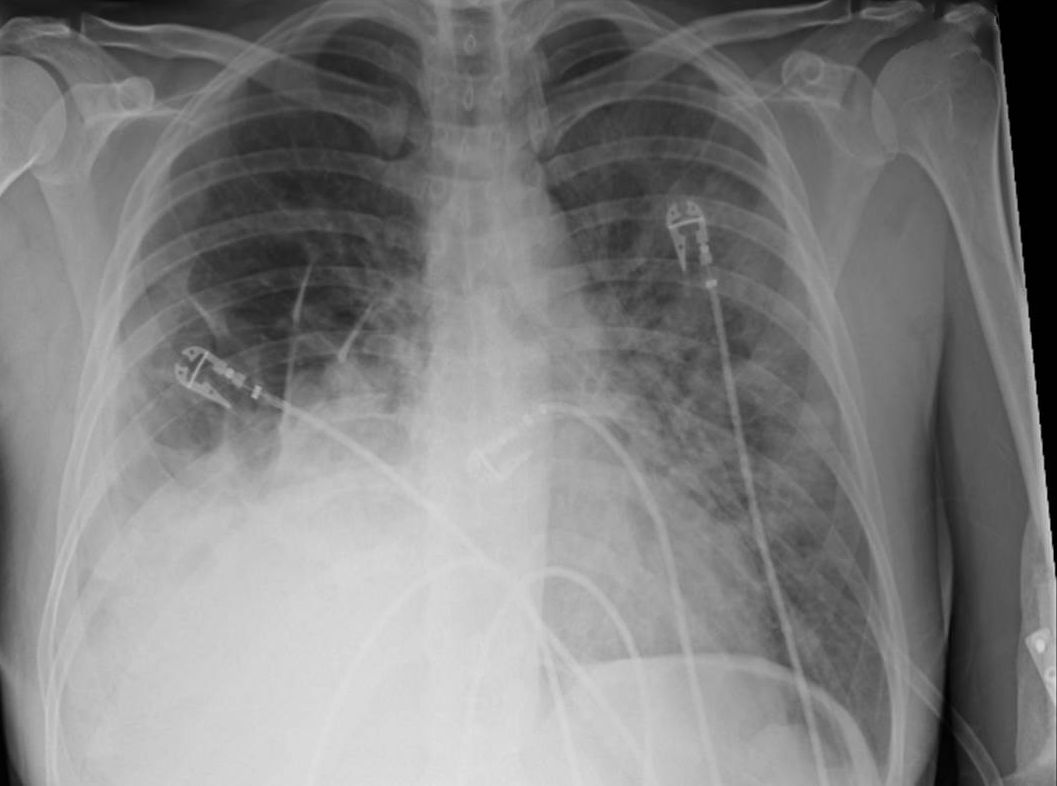
Diaphragmatic hernia
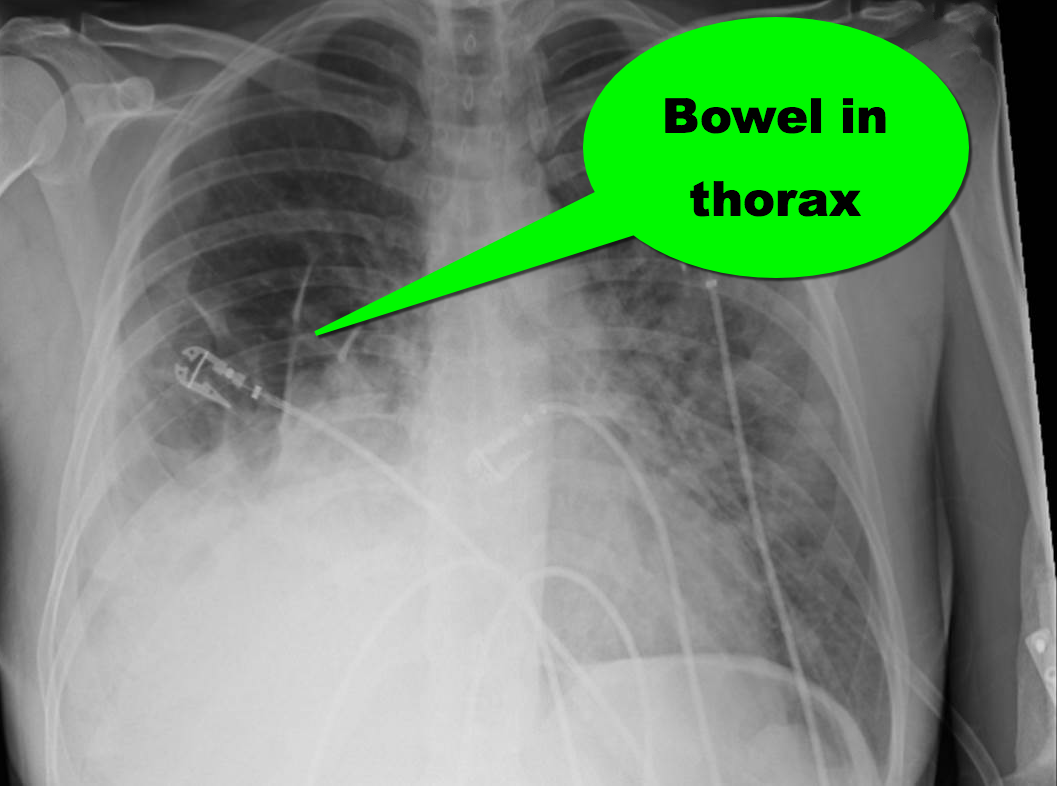
Follow me on Twitter (@criticalcarenow)
Category: Visual Diagnosis
Posted: 9/6/2015 by Haney Mallemat, MD
(Updated: 9/7/2015)
Click here to contact Haney Mallemat, MD
68 year-old man presents with a new-onset seizure. What's the diagnosis and what's in your differential diagnosis?
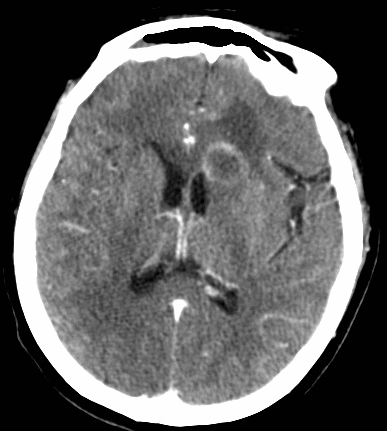
Ring-enhancing lesion
Differential diagnosis of a ring-enhancing lesion
| Neoplasm | Infectious | Neurologic |
| Primary brain tumor | Pyogenic Abscess | Multiple Sclerosis |
| Primary CNS lymphoma | Tuberculoma | Sarcoidosis |
| Metastatic disease | Syphilis | Vasculitis |
| Neurocysticercosis | Aneurysm | |
| Toxoplasmosis | Resolving hematoma | |
| Nocardiosis | Cerebral infarct | |
| Cyptococcocus | Post-op changes | |
| Aspergillosis |
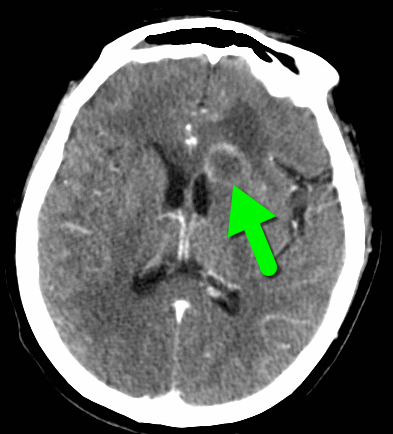
Follow me on Twitter (@criticalcarenow)
Category: Visual Diagnosis
Posted: 8/31/2015 by Haney Mallemat, MD
Click here to contact Haney Mallemat, MD
Person presents following a fall on an outstretched hand and there is snuffbox tenderness. What's the diagnosis?
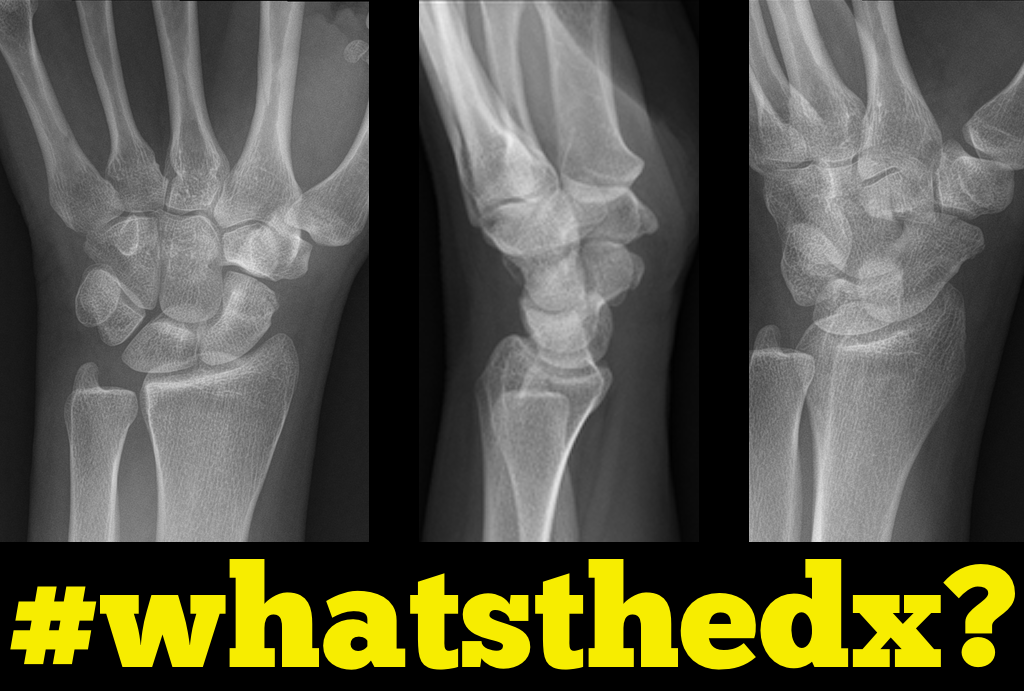
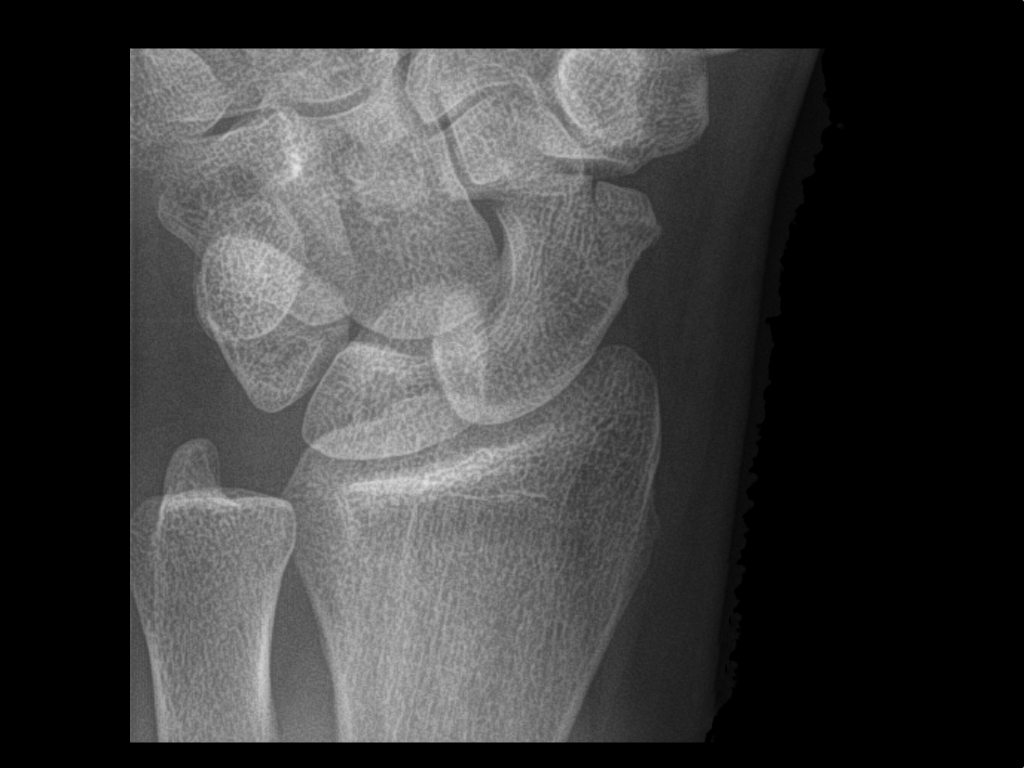
Scaphoid fracture
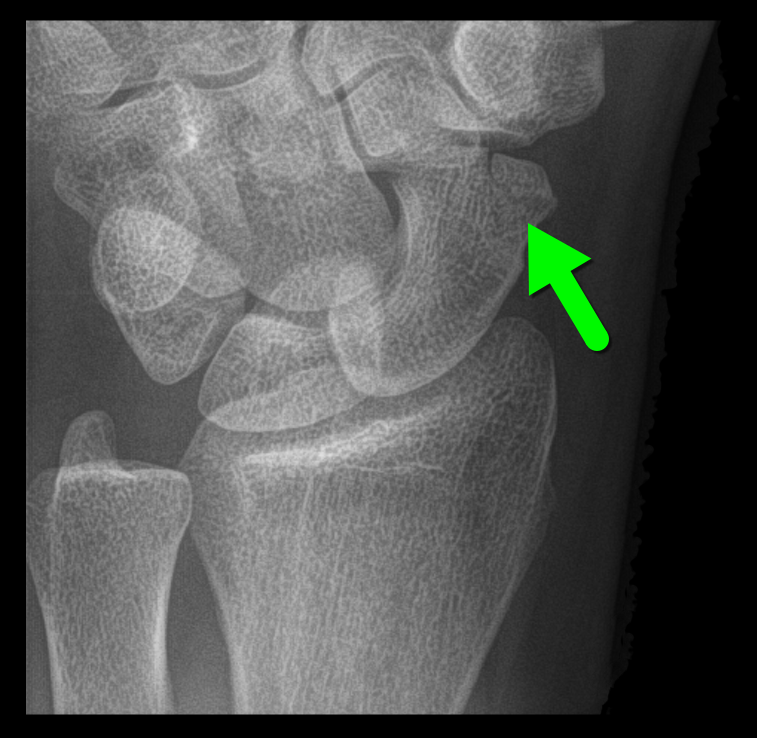
Follow me on Twitter (@criticalcarenow)
Category: Critical Care
Posted: 8/25/2015 by Haney Mallemat, MD
Click here to contact Haney Mallemat, MD
The RV is a low-pressure chamber that doesn’t tolerate acute increases in pulmonary pressures (e.g., ARDS, pulmonary embolism, etc.); acute increases can lead to RV dysfunction / failure
Managing RV dysfunction requires a three-pronged approach:
Follow me on Twitter (@criticalcarenow)
Category: Visual Diagnosis
Posted: 8/24/2015 by Haney Mallemat, MD
Click here to contact Haney Mallemat, MD
You find this interesting view while scanning a patient. Which view is this and why should you care about it?
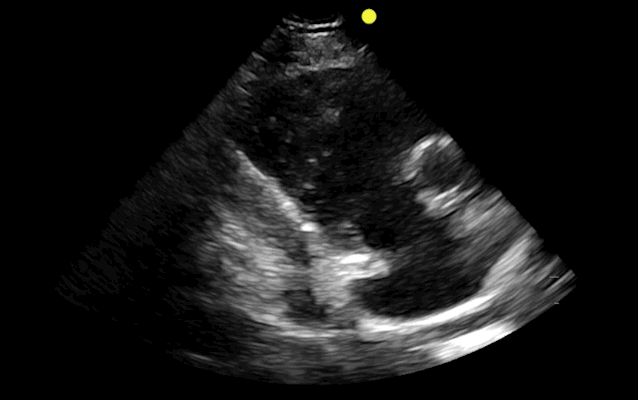
This is the right ventricular inflow view
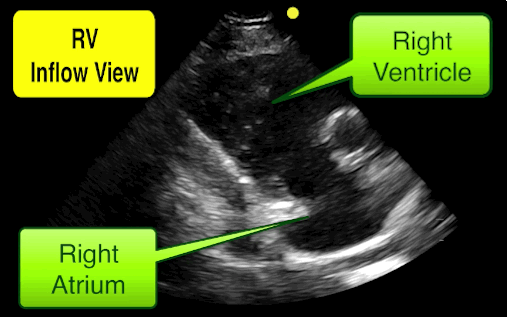
Follow me on Twitter (@criticalcarenow)
Category: Visual Diagnosis
Posted: 8/17/2015 by Haney Mallemat, MD
Click here to contact Haney Mallemat, MD
55 year-old male presents with chest pain. Echo is shown below (parasternal long-axis on the left and aortic root / ascending aorta on the right), what's the diagnosis?
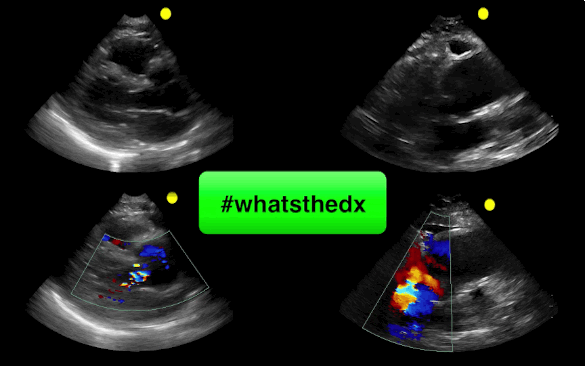
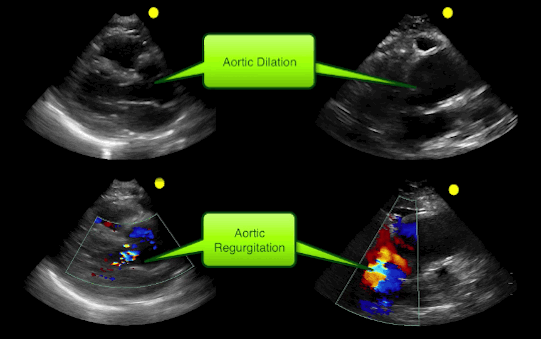
Follow me on Twitter (@criticalcarenow)
Category: Visual Diagnosis
Posted: 8/10/2015 by Haney Mallemat, MD
Click here to contact Haney Mallemat, MD
64 year-old male with no past medical history presents complaining of chronic weight-loss and diffuse chest pain; CXR is shown. What's the diagnosis and what other disease(s) may present similarly?
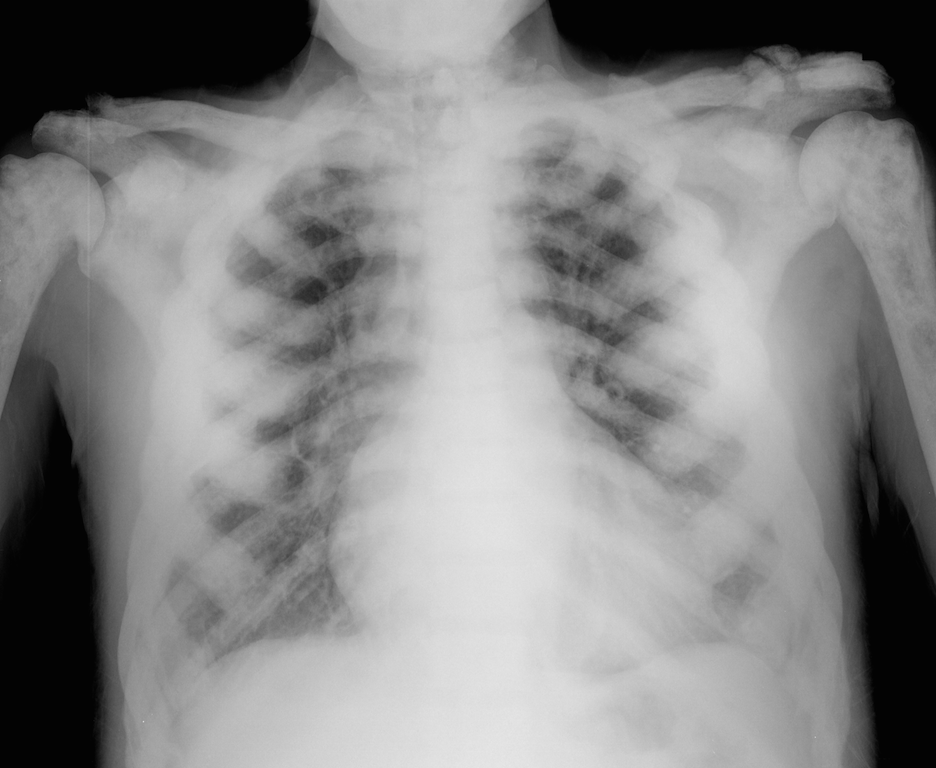
Sclerotic bone (osteoblastic) metastasis secondary to prostate cancer. The patient's CXR from 2 years prior is shown below for comparison.
Other malignancies associated with osteoblastic metastasis:
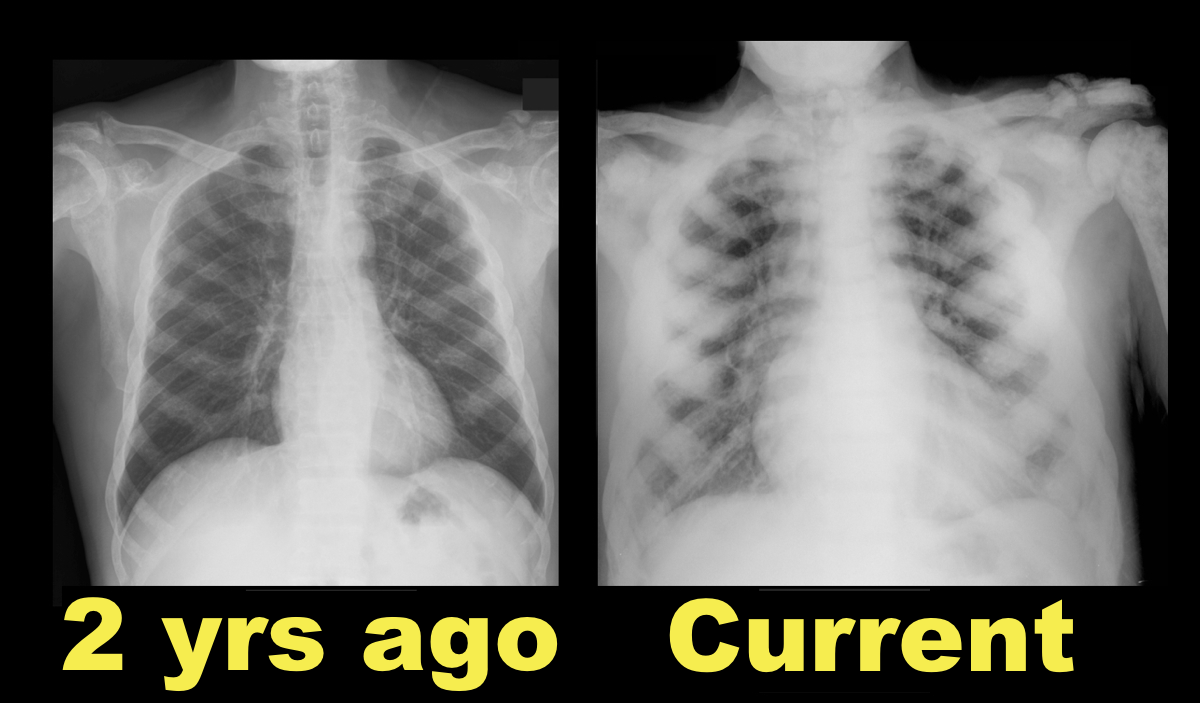
Follow me on Twitter (@criticalcarenow)
Category: Critical Care
Posted: 7/28/2015 by Haney Mallemat, MD
Click here to contact Haney Mallemat, MD
It's July, that means new doctors are learning to do central-lines...here's a quick video with some quick pearls on how to do that. Enjoy!
Follow me on Twitter (@criticalcarenow) or Google+ (+criticalcarenow)
Category: Visual Diagnosis
Posted: 7/19/2015 by Haney Mallemat, MD
(Updated: 7/20/2015)
Click here to contact Haney Mallemat, MD
81 year-old man was mowing the lawn and then felt a sudden pop, then pain in his left arm. What's the diagnosis and what's this sign called?
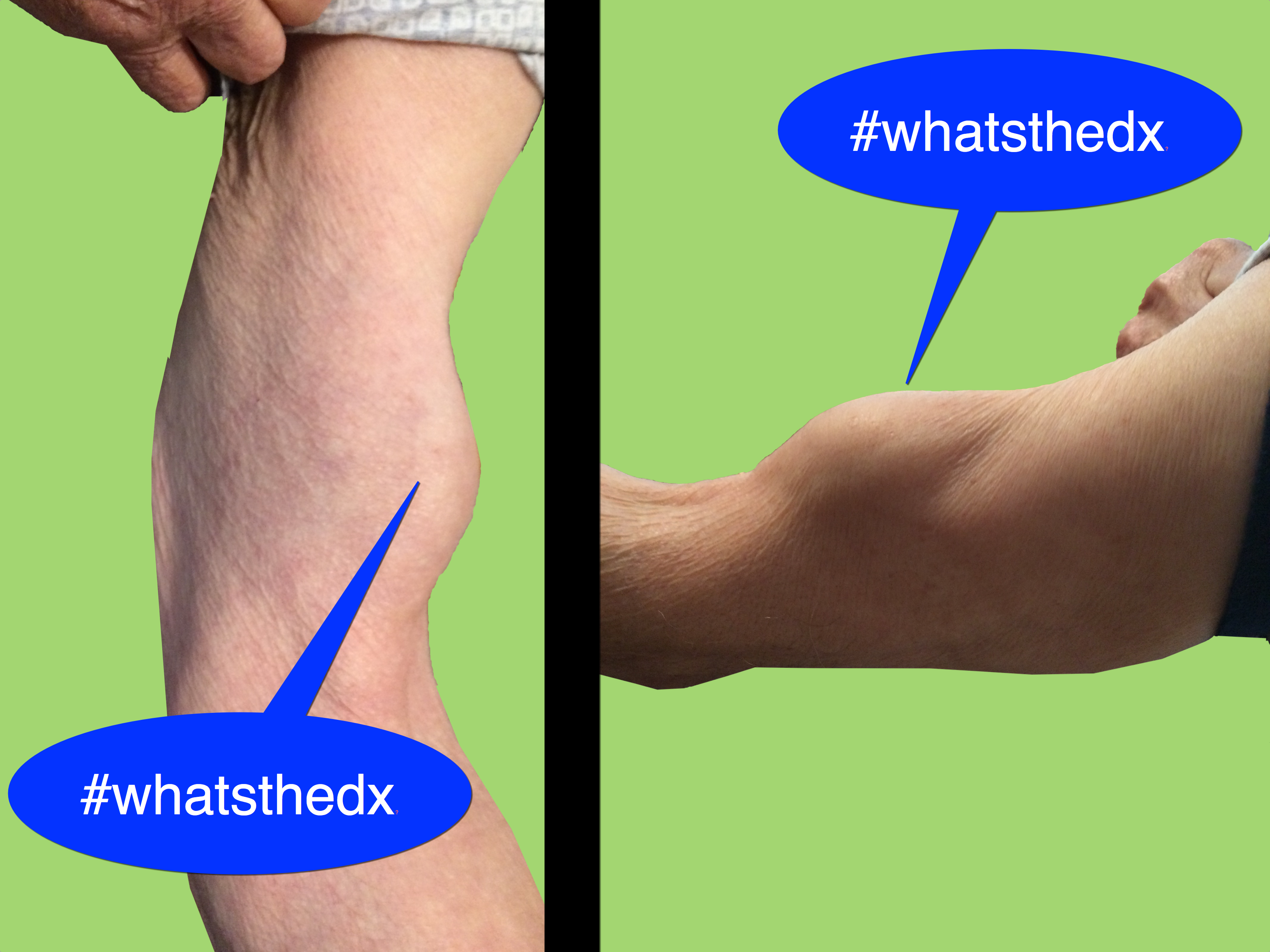
Biceps tendon rupture (BTR) aka Popeye's Sign
Follow me on Twitter (@criticalcarenow) or Google+ (+criticalcarenow)
Category: Visual Diagnosis
Posted: 7/13/2015 by Haney Mallemat, MD
Click here to contact Haney Mallemat, MD
7 year-old male "jammed" 5th finger while playing basketball with pain and swelling over finger. What's the diagnosis?
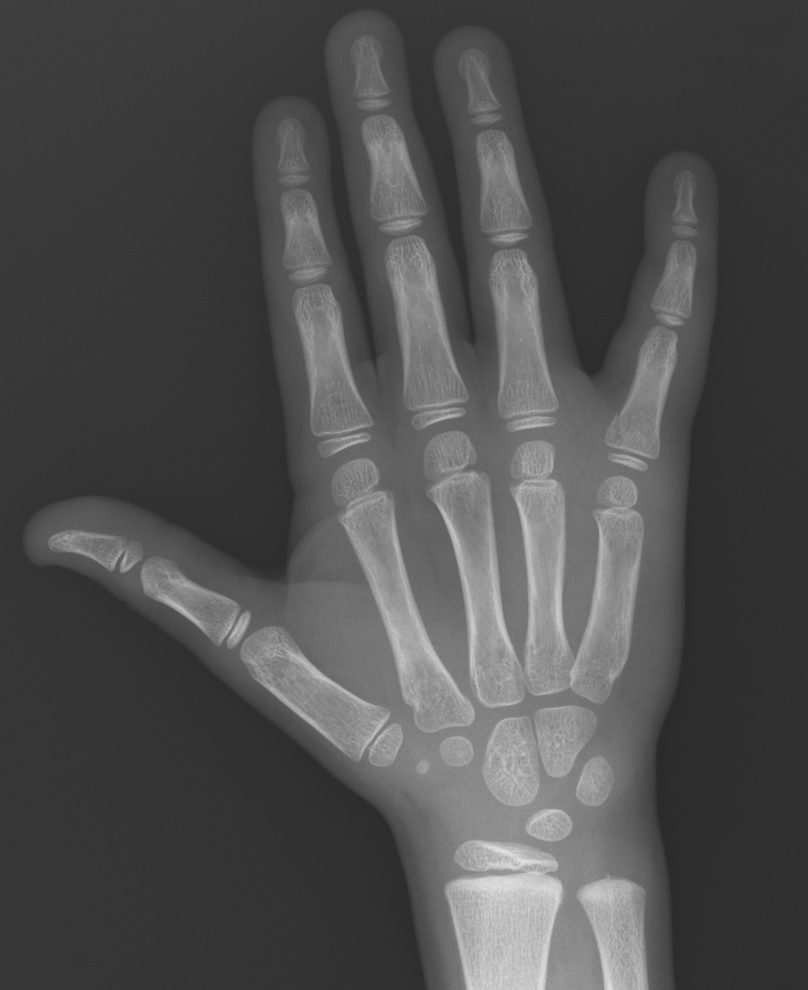
Salter-Harris fracture (type II):
Salter-Harris Fracture (remember mnemonic SALTR)
For more on Salter-Harris fractures, check out this and that
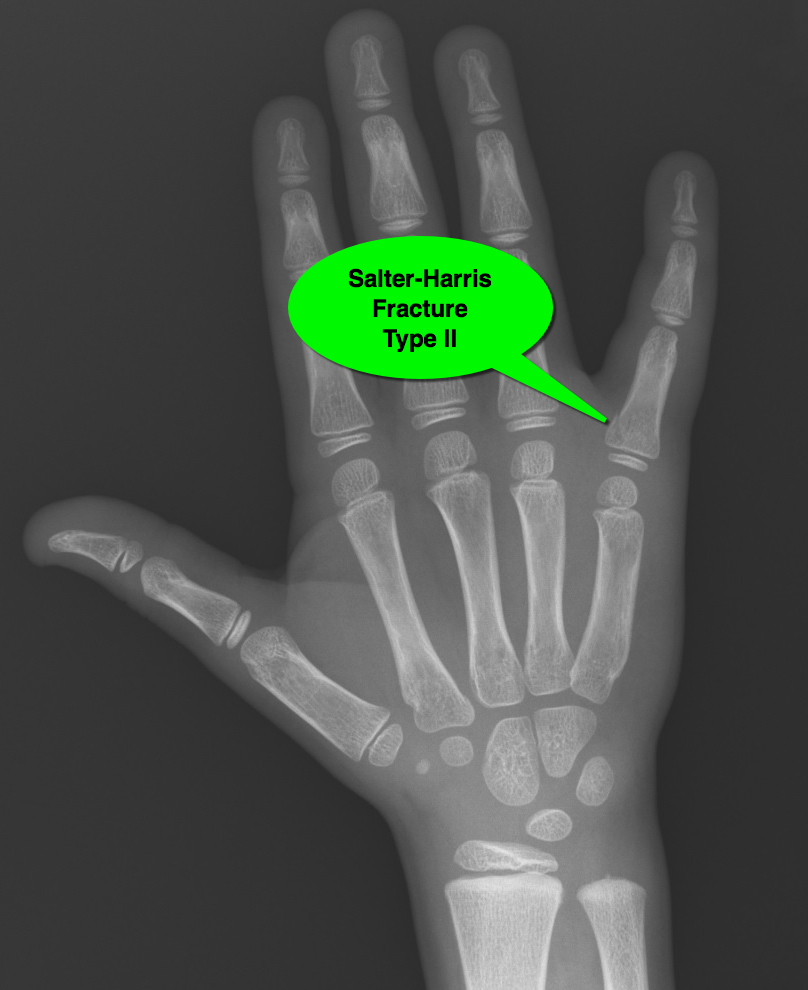
Follow me on Twitter (@criticalcarenow) or Google+ (+criticalcarenow)
Category: Visual Diagnosis
Posted: 7/6/2015 by Haney Mallemat, MD
Click here to contact Haney Mallemat, MD
15 year-old female field hockey player presents with left shoulder pain. Besides fatigue over several weeks, she has no past medical history and there is nothing remarkable on physical exam. What's the diagnosis?
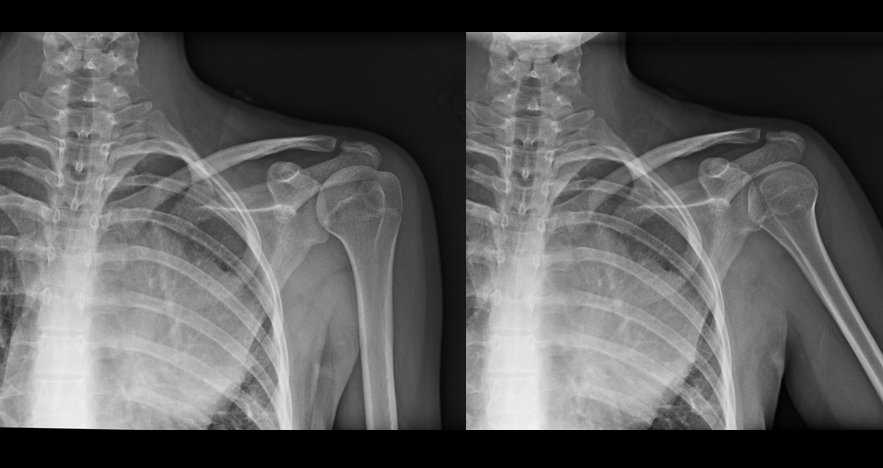
Mediastinal mass (lymphoma confirmed on biopsy)
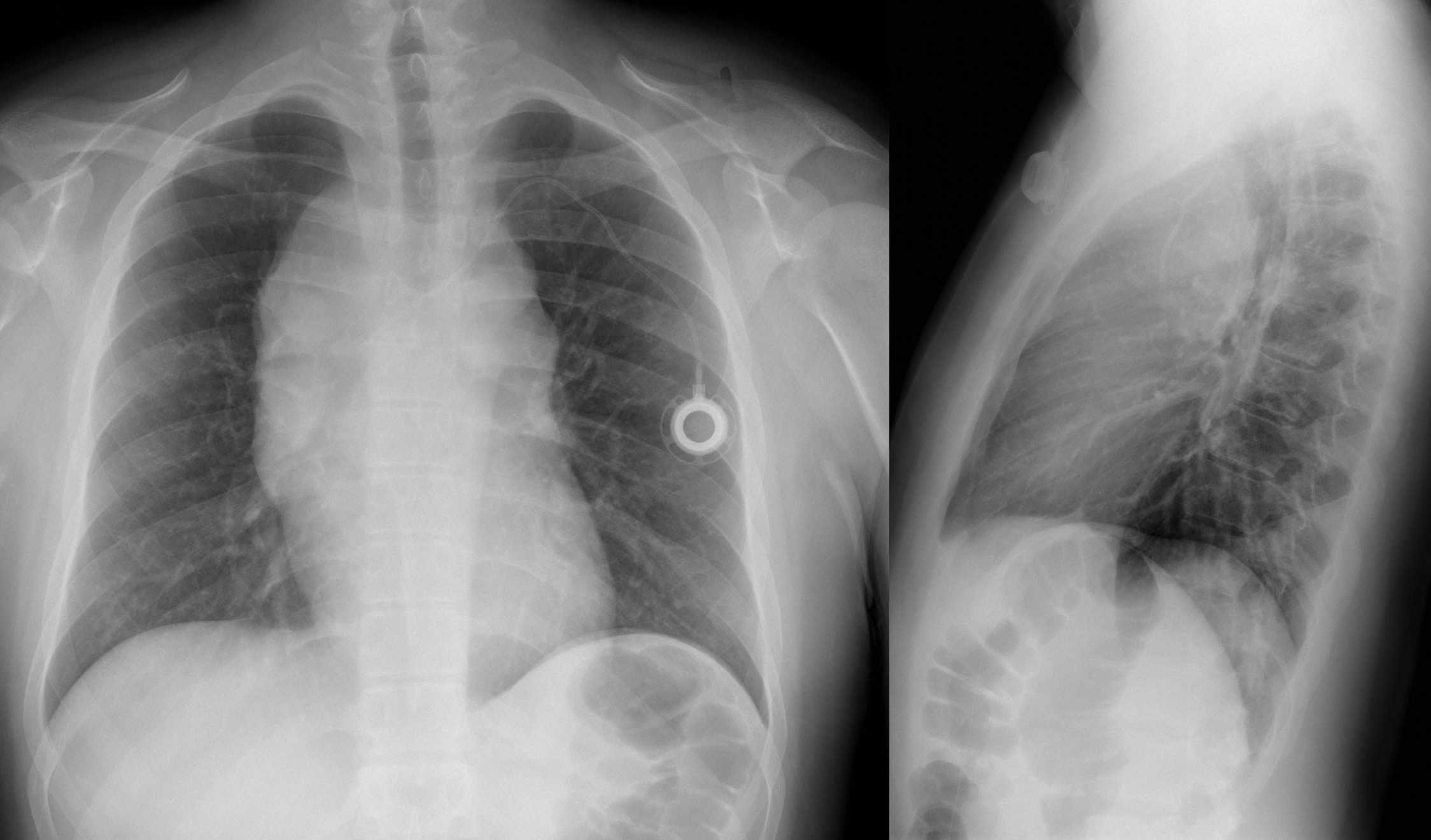
Follow me on Twitter (@criticalcarenow) or Google+ (+criticalcarenow)
Category: Visual Diagnosis
Posted: 6/29/2015 by Haney Mallemat, MD
(Updated: 6/30/2015)
Click here to contact Haney Mallemat, MD
25 year-old male falls from 10 feet and lands on his right shoulder, what's the diagnosis?
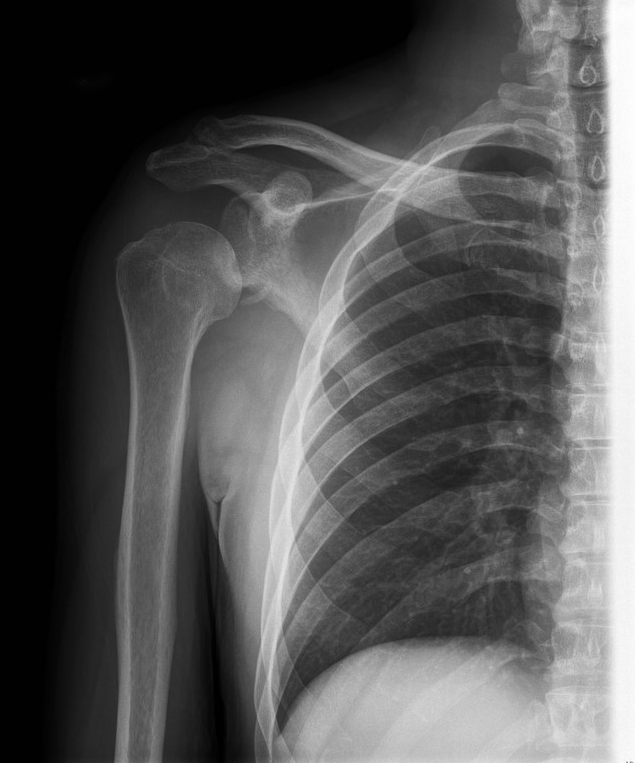
Yes, the shoulder is dislocated...but did you notice anything else (see below)?
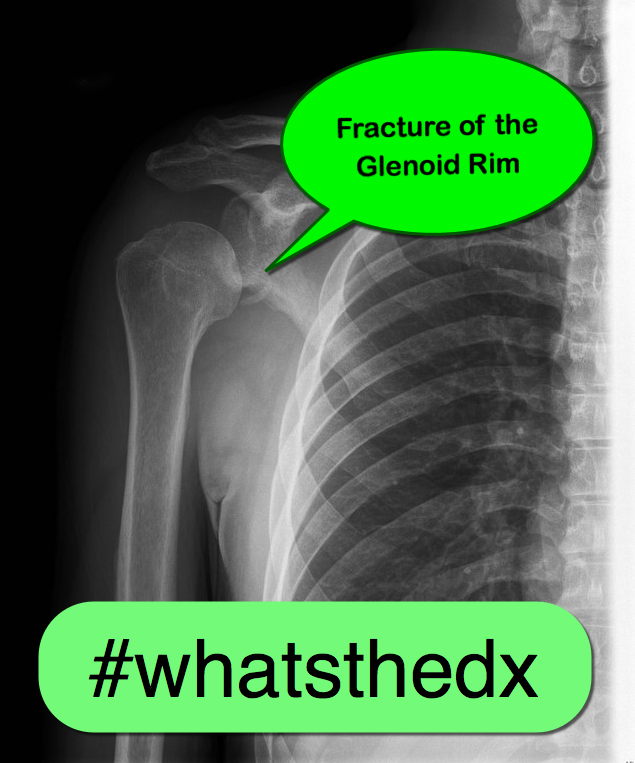
Bankart lesion (a.k.a. fracture of the glenoid fossa)
Follow me on Twitter (@criticalcarenow) or Google+ (+criticalcarenow)
Category: Visual Diagnosis
Posted: 6/22/2015 by Haney Mallemat, MD
(Updated: 6/23/2015)
Click here to contact Haney Mallemat, MD
30 year-old patient presents with palpitations. A parasternal long-axis clip is shown below along with the rhythm strip. What's the diagnosis and what drug was given during this clip?
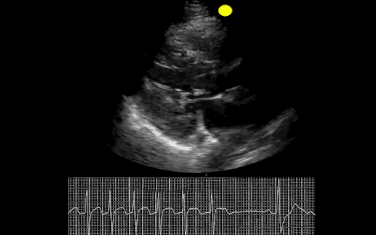
This was SVT and adenosine was given; notice how the heart pauses in the echo and in the rhythm strip.
Follow me on Twitter (@criticalcarenow) or Google+ (+criticalcarenow)
Category: Visual Diagnosis
Posted: 6/15/2015 by Haney Mallemat, MD
Click here to contact Haney Mallemat, MD
Patient presents with headache and papilledema. What's the diagnosis?
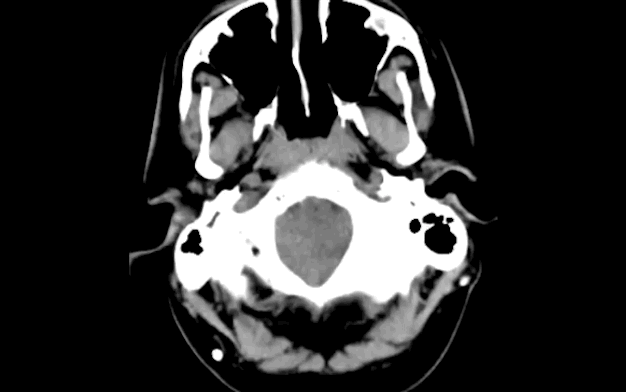
Hydrocephalus secondary to malfunctioning VP shunt.
The patient went to the operating room for a shunt repair and the CT after the repair is shown; although not dramatically different it does show an improvement of the hydrocephalus.
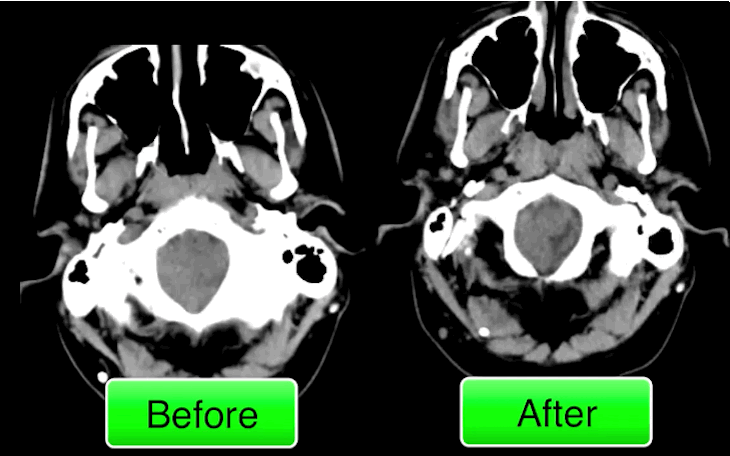
Follow me on Twitter (@criticalcarenow) or Google+ (+criticalcarenow)
Category: Critical Care
Posted: 6/9/2015 by Haney Mallemat, MD
Click here to contact Haney Mallemat, MD
Intraosseous (IO) placement is a rapid and reliable method for obtaining venous access in critically ill patients; previous studies demonstrated that everything from vasopressors to packed RBCs can be infused through it.
This prospective observational study compared the first-pass success rate and time to successful placement of IO versus landmark-based (i.e., not ultrasound guided) central-line placement (femoral or subclavian access) during medical emergencies (e.g., cardiac arrest) in an inpatient population.
The first pass success rate for IO was found to be significantly higher than the landmark technique (90% vs. 38%) and placement was significantly faster for IOs (1.2 vs. 10.7 minutes).
Despite the fact that this study did not directly compare IO to ultrasound guided line placement, this study demonstrates that IO is a rapid and effective means to obtain central access during patients with emergent medical conditions.
Bottom-line: Consider placing an IO line when rapid central access is necessary.
Follow me on Twitter (@criticalcarenow) or Google+ (+criticalcarenow)
Category: Visual Diagnosis
Posted: 6/8/2015 by Haney Mallemat, MD
Click here to contact Haney Mallemat, MD
The following clip is one of three findings found in Beck’s triad. Name all three findings and how often are all 3 signs present for patients with pericardial tamponade?

Follow me on Twitter (@criticalcarenow) or Google+ (+criticalcarenow)
Category: Visual Diagnosis
Posted: 5/25/2015 by Haney Mallemat, MD
Click here to contact Haney Mallemat, MD
Do you need to get stuff out of the thorax (like fluid or air) and don't want to place a HUGE chest tube? Consider a pigtail catheter; don't know how to place one? Well check out this video and learn how.
Follow me on Twitter (@criticalcarenow) or Google+ (+criticalcarenow)
Category: Visual Diagnosis
Posted: 5/17/2015 by Haney Mallemat, MD
(Updated: 5/19/2015)
Click here to contact Haney Mallemat, MD
5 year-old with no past medical history, complains of a limp and mild left knee pain. No history of trauma. Physical exam is significant for a low-grade fever and is otherwise normal. What’s the diagnosis?
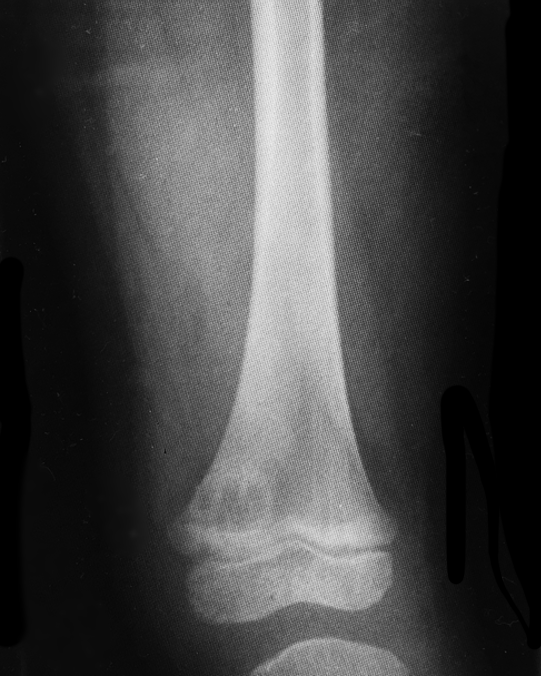
Brodie's abscess a.k.a subacute osteomyelitis
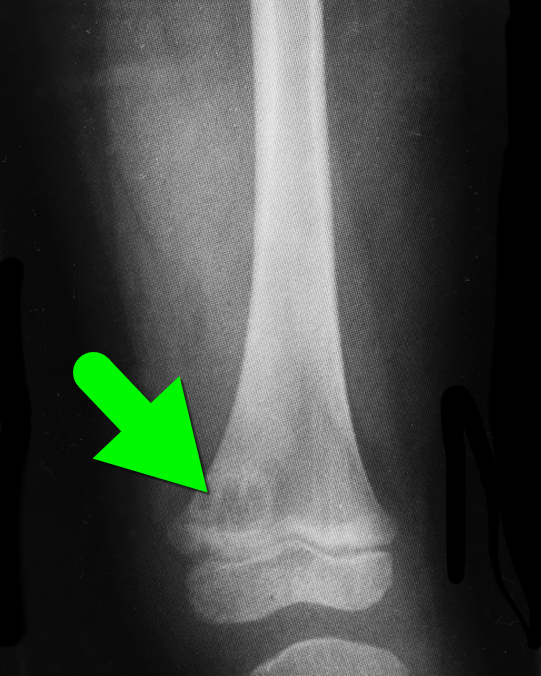
Follow me on Twitter (@criticalcarenow) or Google+ (+criticalcarenow)
